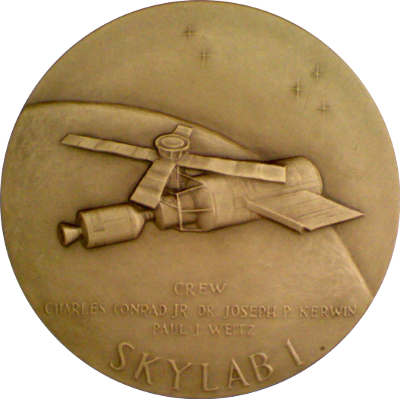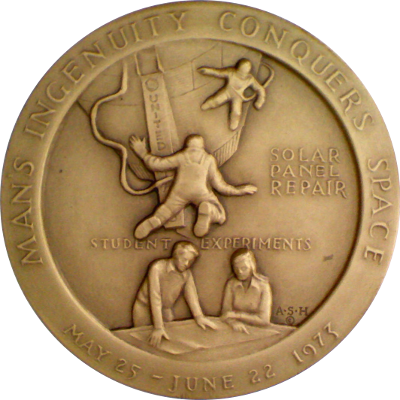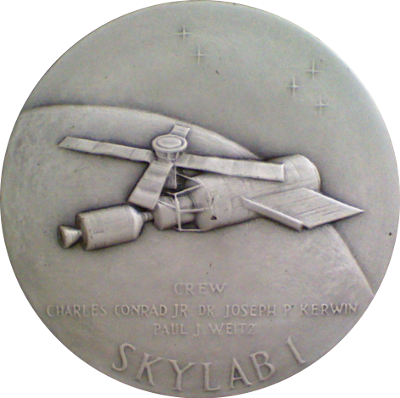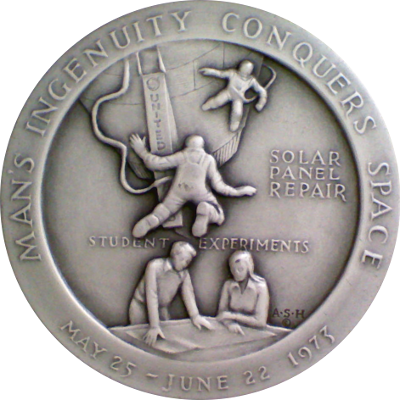



The obverse bears image of Skylab in orbit over planet Earth, stars in background. Under space laboratory, CREW / CHARLES CONRAD JR. - DR. JOSEPH P KERWIN / PAUL J WEITZ; At bottom, SKYLAB 1
The reverse bears two astronauts performing extravehicular activites over two students at planning table. In ring around, MAN'S INGENUITY CONQUERS SPACE / MAY 25 - JUNE 22 1973; in upper right, SOLAR / PANEL / REPAIR; over students, STUDENT EXPERIMENTS; signed at lower right, A - S - H / ©
The medal has maker's mark at 6:00, MEDALLIC ART CO.N.Y. BRONZE
Skylab was launched and operated by NASA and was the United States' first space station. Skylab orbited the Earth from 1973 to 1979, and included a workshop, a solar observatory, and other systems. It was launched unmanned by a modified Saturn V rocket, with a weight of 169,950 pounds (77 t). Three manned missions to the station, conducted between 1973 and 1974 using the Apollo Command/Service Module (CSM) atop the smaller Saturn IB, each delivered a three-astronaut crew. On the last two manned missions, an additional Apollo / Saturn IB stood by ready to rescue the crew in orbit if it was needed.
The station was damaged during launch when the micrometeoroid shield separated from the workshop and tore away, taking one of two main solar panel arrays with it and jamming the other one so that it could not deploy. This deprived Skylab of most of its electrical power, and also removed protection from intense solar heating, threatening to make it unusable. The first crew was able to save it in the first in-space major repair, by deploying a replacement heat shade and freeing the jammed solar panels.
This medal is the first in a series of three to commemorate the three manned missions to Skylab. The missions numbers really are off by one because technically Skylab 1 was the unmanned launch of the lab itself. The first manned mission should really be called Skylab 2 but the official numbering scheme never stuck.
The medal measures 62mm in diameter and was struck by the Medallic Art Company of New York.
References: MACo 1973-159